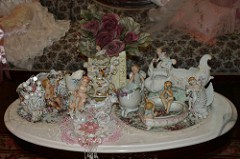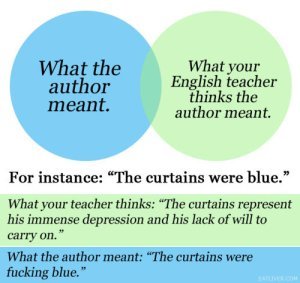Checkov’s Gun for fun and meaning
Before I start on today’s topic, I just want to thank everyone who commented on last week’s post, which was part of the Indie-Author blog hop. I really appreciated all of your comments (even if it took me a few days to get around to responding to them-sorry!). And the winner of the copy of Falling is Cathy Brockman (chosen at random). If you haven’t already seen my email, look out for it, Cathy! Thanks!!
Anton Checkov, the renowned play write once said “If you say in the first chapter that there is a rifle hanging on the wall, in the second or third chapter it absolutely must go off. If it’s not going to be fired, it shouldn’t be hanging there.”
Basically what he means is that if you mention something in the beginning of your novel, there has to be a reason for it, a purpose. You can’t just mention something and then not use it.
Think back to Harry Potter and the Sorcerer’s Stone. Towards the beginning of the story something as insignificant as a card included in packet of candy becomes a major piece of information later in the story when Harry, Hermione and Ron are trying to piece together the puzzle. Nothing is too insignificant.
This is especially true of the descriptions of the world in which your characters live. What they see and what is mentioned by you, the author, take on meaning. If you say that the  sofa was a red and white striped brocade with scroll arms in the latest fashion, your reader knows something about the character that owns that sofa and the one who recognized it as fashionable. If there are delicate china figurines on the side table, you know that no children run through the room. And if you specifically mention those china figurines, there’s a good likelihood that at one point in the novel, one of them is going to be knocked over and broken or thrown at someone’s head.
sofa was a red and white striped brocade with scroll arms in the latest fashion, your reader knows something about the character that owns that sofa and the one who recognized it as fashionable. If there are delicate china figurines on the side table, you know that no children run through the room. And if you specifically mention those china figurines, there’s a good likelihood that at one point in the novel, one of them is going to be knocked over and broken or thrown at someone’s head.
We need to use the setting we create. If we don’t use the objects we mention, there has to be another good reason for mentioning them.
Of course, a fun way to trick our always knowledgeable readers is to create a red-herring with our “Checkov’s gun”. Place that gun on the wall (perhaps literally) and have people constantly look at it, mention it, be aware that it’s there and could be/have been used—and then have the murder weapon be something else entirely.
As I start editing my current WIP, I’m making note of all the objects I mention in my  descriptions—everything from weapons (in this case medieval swords and axes) on the wall to flowers in the garden which can be cut to be put into the house. All of these things have meaning or will be used at some point in the story. I cannot simply mention something and then not use it. If I haven’t used something mentioned, I try to think about what my subconscious mind was thinking when I wrote that. Was there a deeper meaning that I’ve simply forgot as it, perhaps, flitting in and out of my mind in the moment of writing?
descriptions—everything from weapons (in this case medieval swords and axes) on the wall to flowers in the garden which can be cut to be put into the house. All of these things have meaning or will be used at some point in the story. I cannot simply mention something and then not use it. If I haven’t used something mentioned, I try to think about what my subconscious mind was thinking when I wrote that. Was there a deeper meaning that I’ve simply forgot as it, perhaps, flitting in and out of my mind in the moment of writing?
On the other hand, there is also “The Curtains Were Blue” meme, which looks like this:

In this instance, the author didn’t mean a thing by the fact that he made the curtains blue, or the sofa red and white striped damask. It’s just what popped into his head or what he saw on-line when he went looking for period appropriate furnishings. In this example, Checkov’s gun doesn’t apply.
So, how do we know when something is or should be meaningful? Well, naturally we don’t. This just adds a level of interest to the story and the descriptions in it.
Personally, I like to try to infuse some meaning into the descriptions I write, but sometimes the curtains are just blue. I like blue; it’s a pretty color. And that’s that.
So, do you try to add meaning to your descriptions? Do you place a “gun” on the wall for your readers to find out the meaning of later? Or do you just like blue?



